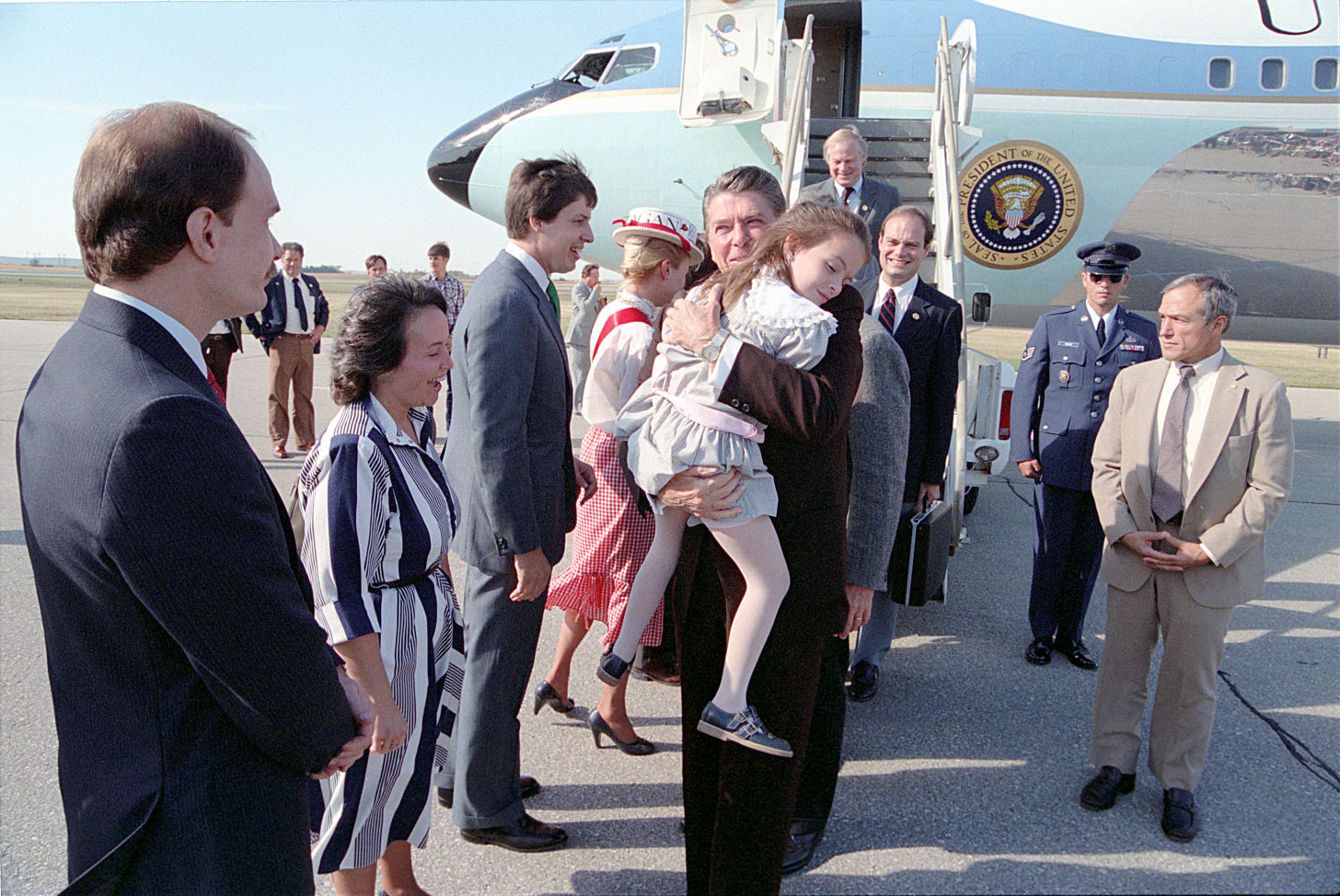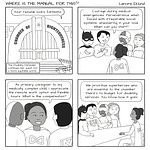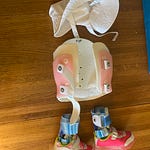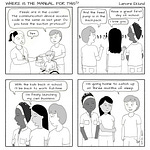“Never doubt that a small group of thoughtful, committed citizens can change the world. Indeed, it is the only thing that ever has.” — Margaret Mead

Medicaid would have paid for Katie Beckett to live her entire life in a hospital.
Her mom, Julie Beckett, had other ideas.
Not only would that have been a waste of government resources, but a poor excuse for a childhood. So Julie Beckett collected arguments and data and took her advocacy all the way to President Ronald Regan. Within two days of the President speaking about this, administrators made an exception for Katie. Soon after, there was an option for states to create what became known as “Katie Beckett waivers,” that would allow funding for disabled children to be raised at home.
Julie Beckett died this month at the age of 72, according to her New York Times obituary. Her daughter passed away in 2012 but lived to the age of 34 — her prognosis vastly improved by living at home.
The Times obituary credits the Beckett women’s advocacy with liberating hundreds of thousands of children from the path of institutionalization.
Though she was widely regarded as one of the most significant figures in the history of the disability rights movement, Ms. Beckett insisted that she was simply looking out for her daughter, and that everything flowed from there.
“There comes a moment in parenting,” she wrote in 2017, “where you discover strength you didn’t know you had — all because your child needs you.”
There are many things I wish I could ask Julie Beckett, but one of my biggest questions is how she felt about the confusing patchwork of Medicaid systems we now have throughout the country.
Though many states have some form of a “Katie Beckett” program, no state’s children’s services program looks the same and not all children who qualify get access. There is an entire website dedicated to the many ins and outs in each of the 50 states’ waivers as relates to children.
Complaints of over-complexity abound. Here’s an article from a couple months ago in Tennessee. Some states, like Nebraska or Oklahoma, are only just now getting around to cutting down years’ long waitlists for children. Others aren’t even trying.
Some states give parents a set budget that they can use to direct care for their child while others make them employers. (This is also true for disabled adults or their representatives but here I’m focusing on how these programs work for kids, who always have a legal guardian directing care.)
Some states, like Colorado and now Arizona, have a program that will even allow parents to be paid as their child’s support worker.
The complexity is so great that even many of the people working in these systems don’t understand them.
In Oregon, as I have researched how to create a paid parent-caregiver program, I have heard several times that the federal government does not allow parents to be paid caregivers under our state’s waivers.
So, I asked the Centers for Medicare and Medicaid Services what they thought. In fact, they said there are several different ways the federal government allows for this freedom.
But first. In order for you to understand their answers, I have to explain the different types of children’s services waivers. Instead of a comprehensive, rational program that applies to every American child, we have several limited, idiosyncratic solutions for various constituencies even within the same state. There are easily hundreds of different buckets of Medicaid money for disabled children across the nation.
Let’s start with what Medicaid is. Started in the 1960s, Medicaid is public health insurance for low-income Americans. What many people don’t realize today is that both Medicaid and Medicare (which is for the elderly) are under the Social Security umbrella.
On the most basic level, the change that Julie Beckett was made famous for was for her daughter to be able to qualify for Medicaid even though the Becketts were not poor. (The dual-income household had, however, exhausted their private insurance and the only option for Katie would have been to live in a Medicaid-funded institution.) In Katie Beckett waivers — which were actually created and funded through a 1982 tax act — disabled children qualify based on their own resources and incomes, not that of their parents.
Soon after, Congress created Section 1915 (c) of the Social Security Act. That created what’s called Medicaid’s Home and Community Based Services (HCBS) and there are now four different types of waivers for that: Section 1915 (c), Section 1915 (i), Section 1915 (j) and Section 1915 (k). All four of those offer “self-direction options” because beneficiaries, rather than institutions, get to choose how they spend the Medicaid money.
If that weren’t confusing enough, there are also Section 1115 waivers that give states Medicaid money to play around with to develop pilot or experimental health care projects.
There are pros and cons to each of the above six different types of funding that can be used for disabled children’s in-home services. There are other smaller programs, too, but I’m going to stop there. (If you want to dive deep, here is a primer on HCBS.)
In my state, Oregon, we have three different 1915 (c) waivers, a 1915 (k) waiver, a 1915 (i) wavier and a 1115 waiver. We also have a 1915 (j) waiver, but ours does not apply to children.
Get all that? Great. Now you might have a chance of understanding the answers CMS gave me. First, most of Oregon’s children’s services are funded through 1915 (k) — what we call the “K-plan.”
“Medicaid self-direction authorities allow legally responsible family members to be paid providers,” a CMS spokesperson, who for some reason did not want to be identified by name, wrote to me. “Under 1915(k) of the Social Security Act (the Act), family members can be paid providers as long as they do not act as the beneficiary’s representative for 1915(k) related activities such as the person-centered planning process.”
So all four of the “self-direction” plans can allow parents to be paid providers, if states so choose.
The temporary change made during the pandemic’s public health emergency was that the federal government loosened its restriction on the legal guardian for the child. That person could also be a paid provider.
This was already the case, however, for 1915 (c) and (i) waiver programs.
“For both 1915(c) and 1915(i) HCBS authorities, a state may allow legally responsible relatives (including parents) to be paid to provide HCBS services in extraordinary circumstances such as when another provider is unavailable,” the CMS spokesperson said. “Each state defines the extraordinary circumstances in which legally responsible individuals may become paid workers. This provision is usually used with individuals who require a provider with particular skills, such as behavioral interventions. It is also used in rural areas that have provider shortages or during emergencies such as the COVID-19 pandemic or a natural disaster.”
Some people may argue that parents shouldn’t be paid for the care of their own children, or that the childcare crisis is affecting all parents. Personally, I would agree that all U.S. parents need vastly more support and funding than they get. But it is important to note the distinction that we are not talking about subsidizing homemakers or paying parents for childcare. These are jobs with hours and wages and identified tasks that go above and beyond “ordinary” parenting.
“Even in extraordinary circumstances, for children, the parent or legally responsible relative may be paid to provide only those services in addition to what a child of the same age without a disability requires and which are necessary to assure the health and welfare of the child,” CMS said.
CMS gave me much more information on the options for states to pay family members, including parents, but it gets even more technical and I don’t want to bore you. For those interested, here is a link to the full Q&A.
The bottom line?
“…there is no federal policy that would preclude a family member from providing services they are qualified to provide,” CMS said.
So why aren’t paid parent-caregivers standard yet? Not just in Oregon, but throughout the country?
Personally, I see a thread through Julie Beckett’s advocacy to today. What I see — from the creation of institutions, to the rise of complex bureaucracies, all the way to the resistance to paying parents as caregivers — is a prejudice. Too many believe that parents are just too incompetent and society needs to create some sort of expensive third-party system to control the care of their disabled children.
It seems we to have to keep proving them wrong, generation after generation.
Medical Motherhood’s news round up
Snippets of news and opinion from outlets around the world. Click the links for the full story.
• From The Gazette (Iowa): “We’re carrying the torch Julie Beckett lit”
Being the parent of a child with disabilities can best be described as a master class in fortitude. You must grieve a life you expected for your child, while at the same time learn to be grateful for their existence exactly the way they are, because disability is diversity; and diversity is beautiful.
[…]Those first few years were the toughest. I often define two turning points for me in this journey.
First, was when Winnie was given the cerebral palsy diagnosis at age 2, which helped me connect with a group of parents going through similar struggles, and I suddenly had community.
Second, was when Winnie’s diagnoses qualified her for Oregon’s Medicaid Waiver (an iteration of the Katie Beckett Waiver with no waitlist, a true godsend). I often say, that is when the financial nightmare of having a medically fragile child (who hit her out of pocket max yearly) finally let up a little.
• From Syracuse.com: “Death of disabled teen uncovers bigger crisis in Oswego County (Letter from the Editor)”
[…Oswego County] “has the second-highest rate of child abuse of anywhere in New York state. There are repeat complaints in the same families. There is even a high rate of maltreatment in foster care. We talked to experts, who said to look at poverty, addiction, lack of doctors and transportation as culprits along with the understaffed and untrained social services workers who were under fire.”
[…]The problems [reporters Michelle Breidenbach and Rylee Kirk] wrote about this week go beyond the physical abuse people normally think of related to child abuse. “Only 11% of cases in 2020 were physical abuse and only 5% were sexual abuse. The rest were caused by neglect and parental drug and alcohol misuse – problems rooted in economic and social desperation that can be addressed,” said Michelle. “Neglect is also easy to hide in a rural county where people are spread out and not easily reached in snow and spotty internet connections. A lot of readers have told us they did not know the extent of the problem until they read our story.”
• From Dominican Today (Dominican Republic): “The titanic struggle of two mothers of children with disabilities”
Micky Rodríguez and Dayana España are two mothers with different realities but are united by the multiple disabilities their children [have]. Both have discovered an inner strength greater than themselves in their experiences as special mothers.
With the hope that the State will focus its eyes on the most compromised children with disabilities, and with faces full of peace and serenity, they received Listin Diario reporters in their homes to disclose the reason for their lives: their children.
“Marlene wanted to be born,” Micky begins to narrate about her 10-year-old daughter who faces multiple challenges… challenges that contain the engine of human learning (visual impairment, profound bilateral hyperacusis, autism, and speech and language disorder due to the same condition).
For Micky it has been a titanic task to raise her and give her the life she deserves together with her daughter’s father, Juan. One of the reasons for this is “because low-income mothers in the country do not have the support they need, and therapies are expensive, especially for a child with multiple disabilities who needs several specialists and professionals.”
Medical Motherhood is a weekly newsletter giving those raising disabled children the news and information they need to navigate complex systems. Get it delivered to your inbox each Sunday morning or give a gift subscription. Subscriptions are free, with optional tiers of support. Thank you to our paid subscribers!
Follow Medical Motherhood on Facebook, Twitter, TikTok, Spotify, Apple Podcasts, or Instagram or, visit the Medical Motherhood merchandise store to get a T-shirt or mug proclaiming your status as a “medical mama” or “medical papa.”
Do you have a question about raising disabled kids that no one seems to be able to answer? Ask me and it may become a future issue.















Share this post